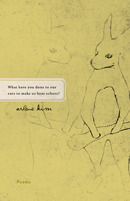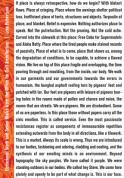Bernard Malamud recounts a few years in the life of a shopkeeper and his family in The Assistant. Morris Bober is a poor immigrant who runs a grocery in New York that was once successful. Morris’s money troubles are the ground condition of the novel and Malamud concisely and completely uses the details of the first few pages to set up the hardship Morris under he is running his store.
Working Against the Elements
The novel opens with a wind that “already clawed” as Morris pulls in heavy cases of milk before dawn. The action is simple, he is opening his store, but already the reader sees how early he is at work and the reader feels the unpleasantness with Morris as the wind “flung his apron into his face.” His first customer of the day offers complaints and three pennies before he can even turn on the heat in the store.
Hungry and Bored
Morris continues to set up the store “chewing on a roll, not tasting what he was eating” as he waits for his next anticipated customer to come in and spend his customary twenty-seven cents. The reader sees Morris in stasis. He is subsisting (on the roll) but he has no sentient pleasure (the taste). Most of all, this second mention of a dollar (or rather a cents) figure sets up the expectation for the reader that each of these meager pennies counts for Morris. He is hungry for the cash, not the roll.
A Sympathetic Character
Then a little girl comes in asking for credit. The reader already feels with Morris what a hardship this is. At first he refuses her, but she cries and he give in. Morris is not an unkind man. When he records the debt, he has to fudge the figures for his wife. This is the first mention of Morris’s family and why he might be working so hard. It also sets up a constraint in that despite how valuable each penny is, it is more valuable to him to not upset his wife than it is to collect the correct amount. Malamud writes, “His peace—the little he lived with—was worth forty-two cents.”
No Escape
Sitting at the counter, Morris observes how “the store looked like a long dark tunnel.” There is no escape from this store or from his life except the final escape. In fact throughout the book, Morris looks at many possible ways to escape the store, but because of his honor and his obligations (along with some bad luck) the only way he eventually escapes the store is through the long dark tunnel into the light.
Swimming with Sharks
Morris continues to wait for his twenty-seven cent customer who is also his tenant, but the tenant has gone to another store for his groceries. Competition recurs throughout the book as the perceived success of the competition shapes Morris’s relationship with his assistant and constrains Morris’s lifestyle. The threat of other stores holds Morris’s livelihood in by a thread and it likewise holds the store by a thread.
Morris considers selling in these first few pages as he does again and again throughout the book, but he always comes to the same conclusion, “[B]ut who would buy?” The reader can feel the dreariness of this world closing in. There is no escape from the misery of this store or this life.
The Smallest of Rewards
The section ends as two customers come in and buy sixty-three cents and then forty-one cents of goods from Morris. “He had earned his first cash dollar for the day.” Because Malamud has detailed the long list of activities Morris has done before this moment and gone over the many threats to the sparse living he makes, the smack of the sum total of one dollar in receipts for the day is stunning. I felt how hard and long Morris had to work for that one dollar, and the drudgery leading up to that revelation said more about Morris and his life than I imagined it could. Although inflation has changed the value of a dollar since the fifties when this book was written, the figure of one dollar remains iconic.
Because Malamud made Morris a good man and a hard-working man, I wanted to sympathize with him. I felt wrapped up in his plight. I worried that there was no escape. And because he set it all up in these first few pages, I was able to carry all of these concerns throughout the book. I have heard it said many times that the seeds of the novel are in the first few pages or in the first chapter, but I haven’t noticed it so acutely before. The beauty of how Malamud sets up the book is that it is very simple and straight forward. It doesn’t feel set up; it feels like a story unfolding. It feels like the start of a day and it doesn’t feel explained, but everything the reader needs to know is there. The story is shaped in those first few pages.
If this review made you want to read the book, pick up a copy of The Assistant from Bookshop.org. Your purchase keeps indie booksellers in business and I receive a commission.
 Poet Arlene Kim rocked my literary heart at Richard Hugo House’s Lit Series earlier this year with an erasure poem displayed entirely in slides. This haunting response to the abuse of girls changed my conception of poetry. I bought her book, What have you done to our ears to make us hear echoes?, immediately and have carried it with me every day since.
Poet Arlene Kim rocked my literary heart at Richard Hugo House’s Lit Series earlier this year with an erasure poem displayed entirely in slides. This haunting response to the abuse of girls changed my conception of poetry. I bought her book, What have you done to our ears to make us hear echoes?, immediately and have carried it with me every day since. When I requested a review copy of Occasional Work and Seven Walks from the Office for Soft Architecture by Lisa Robertson, I was working as the managing editor of an architecture magazine while earning my MFA. The irony of my experience was how many architects used convoluted and turgid language to describe designs that were pared down to their purely minimal essences. The days I spent sorting through jargon like “fenestration” and “tectonics” were great training for nights spent finding the clearest way to communicate an idea in my own writing.
When I requested a review copy of Occasional Work and Seven Walks from the Office for Soft Architecture by Lisa Robertson, I was working as the managing editor of an architecture magazine while earning my MFA. The irony of my experience was how many architects used convoluted and turgid language to describe designs that were pared down to their purely minimal essences. The days I spent sorting through jargon like “fenestration” and “tectonics” were great training for nights spent finding the clearest way to communicate an idea in my own writing.